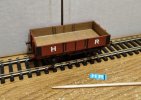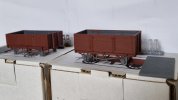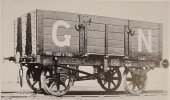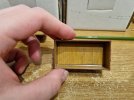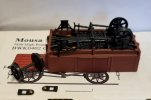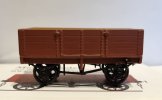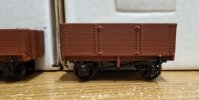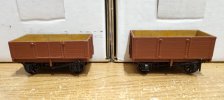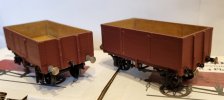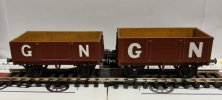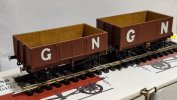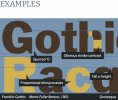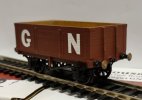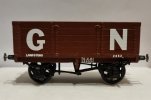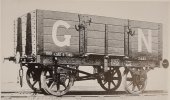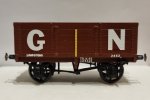Continuing on from the lessons learnt in shaded lettering (see #28) I decided to model a quirky footnote of local history.
Did you know there used to be an oil refinery in Setchey, Norfolk? In 1918 'English Oilfields Ltd' was established to mine a known seam of oil bearing shale on a site bordering the A10 in the vicinity of what is now 'Beers of Europe'. The venture, fronted by a Dr William Forbes-Leslie, saw its capital increased to a ridiculous £1.5 million by the AGM of 1919, based on positive initial samples and promises of a further 2,000 million tons of shale in the ground. However, the whole venture was a massive fraud; the initial samples had been "salted" with Pennsylvania crude-derived oil and the shale oil later extracted in 1921 was found to have a sulphur content of 8-9% vs the industry accepted 0.25% meaning it had no commercial value whatsoever. Understandably the company rapidly saw a massive decline and the shareholders lost their money. That is except for Dr Forbes-Leslie who ran away to Somerset with his new found fortune... (He was later arrested for trying the same scam again).
So what of the wagon I've modelled? Well, to serve the new refinery, a long siding was built from Clarks Drove on the mainline to King's Lynn, across the fens to Setchey. 10 wagons were built by the Midland Railway Carriage and Wagon Co. and numbered 11-20 (a common practice made to make wagon fleets look bigger than they were). It is believed that these were to serve the refinery by moving freshly mined shale from the pits into the facility. In the end, it appears the majority of their use within E.O.L was for the extraction of gravel, which is all the site became good for following the collapse of the oil extraction side of the business!
View attachment 199789
My interpretation is based on a Mousa Models kits of a Midland D.305 3 plank wagon, as the nearest "that looks the part" 3 plank wagon I could source. This was built as intended but painted and lettered to represent No.14 of the fleet. I also added the battens to the solebars that prevented the doors hitting the running gear beneath, aswell as a removable gravel load.
View attachment 199805
View attachment 199806
It's a quirky addition to the collection that I couldn't resist given the story behind it and the fact it is also a local tale.
Until next time...
- James



